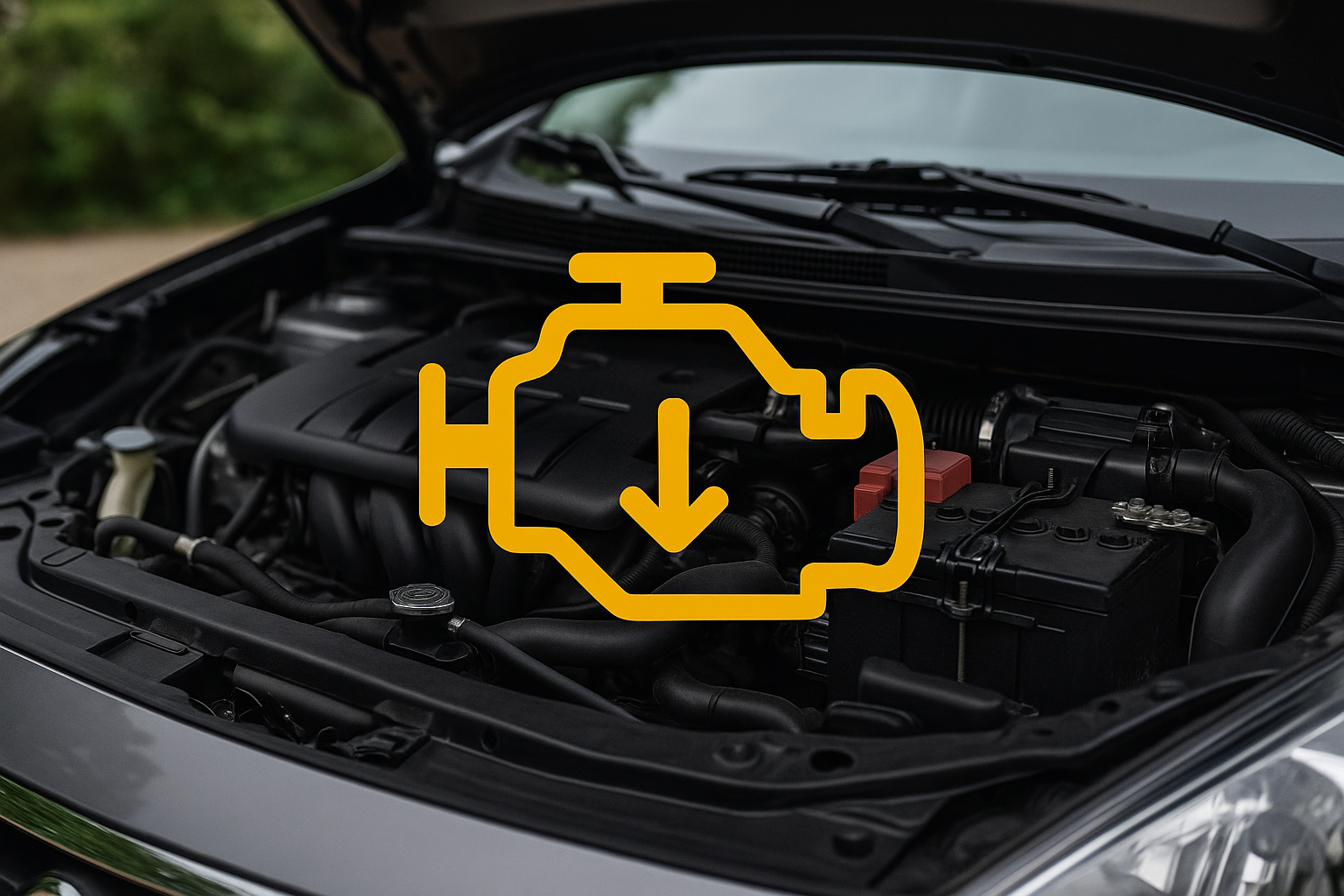When the dreaded “Engine Power Reduced”message flashes on your dashboard, it can instantly make your heart sink. Your car slows down, acceleration becomes sluggish, and performance drops noticeably. This isn’t just a minor inconvenience—it’s a serious warning that your vehicle’s computer has detected a problem and has activated a protective mode to prevent further damage. In this article, we’ll explain what reduced engine power means, its common causes, how to fix it, and why professional diagnostics are essential.
What Does “Engine Power Reduced” Mean?
The “engine power reduced”warning appears when your vehicle’s Engine Control Unit (ECU)detects a malfunction that could harm the engine or other critical systems. To prevent severe damage, the ECU activates a safety feature called “limp mode.”Limp mode limits your car’s power output and speed so you can safely drive to a repair shop. While it allows you to keep driving temporarily, it’s your car’s way of saying something needs immediate attention.
Common Causes of Reduced Engine Power
There are several reasons your car may enter reduced engine power mode. Below are the most common culprits behind this issue.
1. Faulty Throttle Body or Throttle Position Sensor (TPS)
Modern cars use electronic throttle systems that rely on sensors to control airflow. When the throttle body or TPS fails, your car cannot accurately determine how much air to let in, leading to limited acceleration and poor performance.
2. Malfunctioning Oxygen Sensors
Oxygen sensors measure the amount of oxygen in the exhaust gases to balance air and fuel mixture. A bad oxygen sensor can send false data to the ECU, causing improper combustion, loss of power, and triggering the “engine power reduced” warning.
3. Mass Airflow (MAF) Sensor Issues
A dirty or faulty MAF sensor provides incorrect airflow readings to the engine, affecting fuel injection and ignition timing. The ECU may respond by restricting power to prevent engine damage.
4. Fuel System or Transmission Problems
Clogged fuel injectors or failing transmission components can disrupt fuel delivery and shift timing. When this happens, your car’s computer reduces power to protect the drivetrain from damage.
5. Battery or Alternator Malfunction
Electrical power plays a vital role in vehicle performance. If your battery, starter, or alternatoris weak, your car’s electronic systems—including sensors—can fail to function properly. Getting routine Battery, Starter & Alternator Repairservices ensures stable performance and prevents false error signals that can trigger limp mode.
Symptoms of Reduced Engine Power
When your car enters reduced power mode, you may experience one or more of the following symptoms:
- Slow or delayed acceleration.
- The Check Engine Lightappears.
- Rough idling or stalling.
- Unusual noises during acceleration.
- Drop in fuel efficiency.
These symptoms indicate that the issue goes beyond a simple glitch. Only thorough Diagnosticscan accurately pinpoint the root cause.
How to Fix Reduced Engine Power
Resolving an engine power reducedissue depends on identifying the exact problem. Follow these steps to troubleshoot effectively.
1. Check Warning Lights and Error Codes
Use an OBD-II scannerto retrieve diagnostic codes from your ECU. These codes will guide you to the faulty component or system.
2. Inspect Sensors and Wiring
Check the throttle body, oxygen sensor, and MAF sensor for dirt, corrosion, or damage. Faulty wiring or loose connectors can also cause the ECU to enter limp mode.
3. Evaluate the Electrical System
Inspect your battery, alternator, and starter. Inconsistent voltage or a weak electrical system can disrupt communication between sensors and the ECU. Regular Battery, Starter & Alternator Repairservices ensure your car’s power supply remains strong.
4. Clean or Replace Components
Sometimes, cleaning a dirty sensor or throttle body can solve the problem. However, if components are damaged, replacing them is the only reliable fix.
5. Get Professional Diagnostics
When you can’t identify the issue yourself, visit a certified auto repair shop. Professional Diagnosticsuse advanced tools to locate the source of the issue and ensure accurate repairs.
6. Avoid Ignoring the Warning
Driving with reduced engine power might seem manageable at first, but it can worsen over time and cause significant engine or transmission damage. Address it as soon as possible to avoid costly repairs.
Can You Drive with Reduced Engine Power?
You can technically drive short distances with reduced engine power, but it’s not recommended. The limited acceleration can put you at risk, especially in traffic or on highways. The limp mode is designed only to help you reach a repair shop safely—not for normal driving. Continuing to drive in this state could lead to complete breakdown or irreversible damage to key components.
How to Prevent Reduced Engine Power
Preventive maintenance is the best defense against engine performance issues. Here are some essential tips:
- Schedule regular inspections and tune-ups.
- Keep sensors clean, especially the MAF and throttle body.
- Replace damaged or worn-out electrical components.
- Monitor battery voltage and alternator output.
- Run periodic professional Diagnosticsto catch early signs of malfunction.
By following these steps, you can significantly reduce the chances of seeing the “engine power reduced” message again.
When to Visit Asher Auto Care
If your dashboard displays the “engine power reduced”warning, it’s time to visit Asher Auto Care. Our expert technicians specialize in diagnosing and repairing complex performance issues to restore your vehicle’s power and efficiency. We offer comprehensive Battery, Starter & Alternator Repairservices to ensure your car’s electrical system functions perfectly, and our state-of-the-art Diagnosticscan quickly identify and fix any underlying problems. Don’t ignore the warning—schedule your appointment with Asher Auto Caretoday to keep your car running at peak performance.
Wrapping Up: Expert Tips to Fix 'Engine Power Reduced' WarningFinal Thoughts
Seeing the “engine power reduced”warning doesn’t mean your car is doomed—it means it’s protecting itself. By understanding the causes, symptoms, and solutions, you can take immediate action and avoid serious damage. Whether it’s a sensor issue, electrical problem, or engine malfunction, Asher Auto Carehas the tools, expertise, and technology to get you back on the road safely and confidently.

